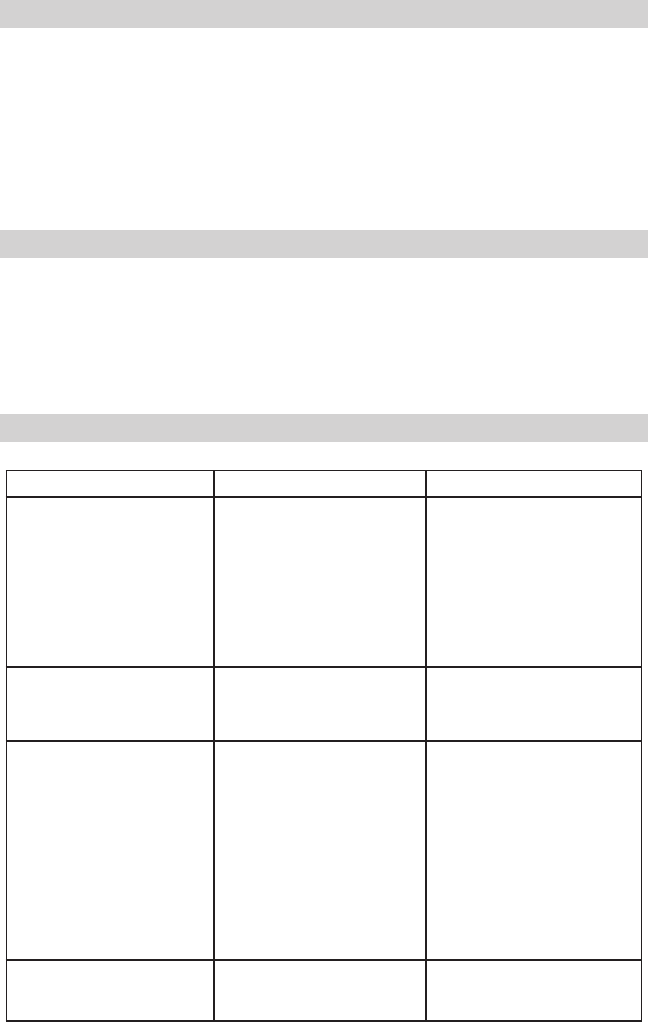
• 9 •
MAINTENANCE INSTRUCTIONS14.
Before performing maintenance, unplug and disconnect the battery charger 14.1
(see Sections 6, 7 and 8).
After use, unplug the charger and use a dry cloth to wipe all battery corrosion 14.2
and other dirt or oil from the terminals, cords, and the charger case.
Ensure that all of the charger components are in place and in good working 14.3
condition, including the plastic boots on the battery clips.
Servicing does not require opening the unit, as there are no user-serviceable 14.4
parts.
STORAGE INSTRUCTIONS15.
Store the charger unplugged, in an upright position. The cord will still conduct 15.1
electricity until it is unplugged from the outlet.
Store inside, in a cool, dry place (unless you’re using an on-board Marine 15.2
Charger).
Do not store the clips on the handle, clipped together, on or around metal, or 15.3
clipped to cables.
TROUBLESHOOTING16.
PROBLEM POSSIBLE CAUSE REASON/SOLUTION
CONNECTED (red) LED
is not lit.
The battery is not
connected correctly.
Reverse connections at
battery.
Check for a poor connection
to the battery and frame.
Make sure the connection
points are clean. Rock the
clips back and forth for a
better connection.
Shut the charger off
and correct the lead
connections.
The CHECK BATTERY
(red) LED is blinking.
The charger is in Abort
Mode.
Reset the charger by
disconnecting the battery.
Have the battery checked.
The CHARGED (green)
LED turns on a few
minutes or less after
connecting the battery.
The battery may be
fully charged or recently
charged, leaving the battery
voltage high enough to
appear to be fully charged.
The battery may be
sulfated.
If the battery is in a vehicle,
turn the headlights on for
a few minutes to reduce
the battery voltage and try
charging again.
A sulfated battery will
eventually accept a charge.
Continue charging for a few
hours. If the charger cannot
complete charging the
battery, it will go into Abort
Mode.
The charger is making an
audible clicking sound.
The charger has a relay
that turns the current on
and off to the battery.
No problem, this is a normal
condition.


















